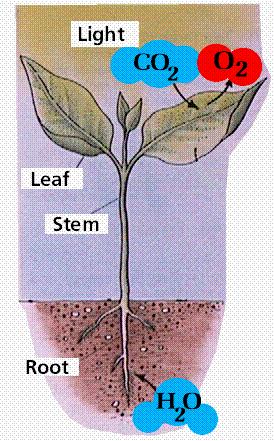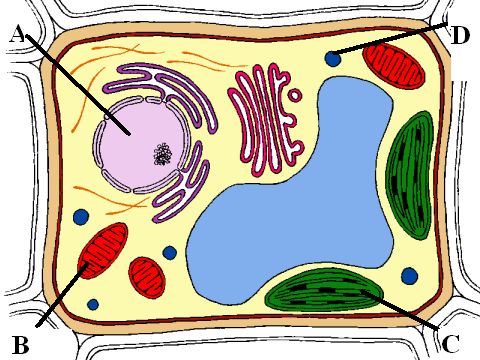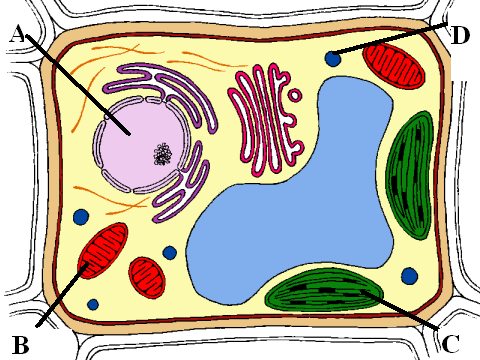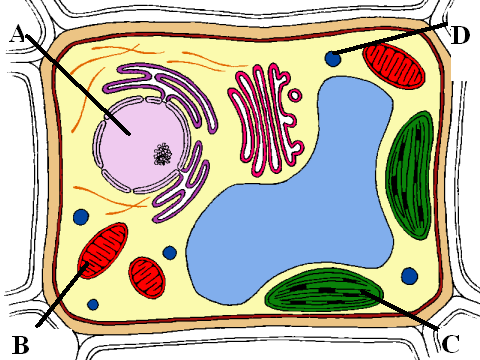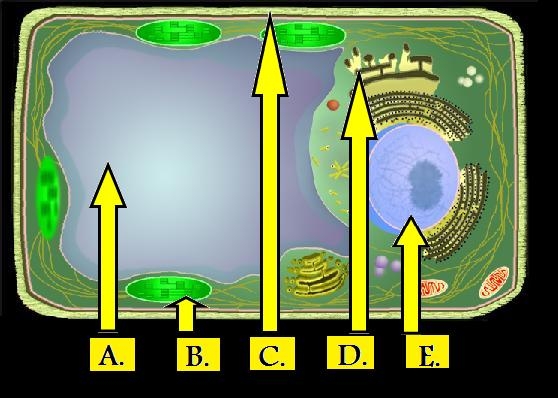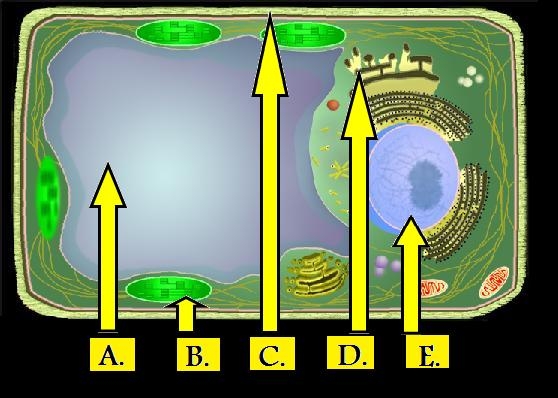John Glenn Cell Test
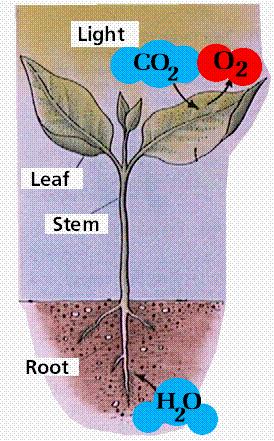
Explore the fascinating world of cell biology with the John Glenn Cell Test, designed to challenge your knowledge on cell structures and functions.
- 1.
What shape are PLANT cells?
- A.
Round
- B.
Triangle
- C.
Rectangle
- D.
Octagon
Correct Answer
C. RectangleExplanation
Plant cells are typically rectangular in shape. This is because plant cells have a rigid cell wall made of cellulose, which gives them a fixed shape. The rectangular shape allows plant cells to pack tightly together, providing structural support to the plant. Additionally, the rectangular shape allows for efficient absorption of sunlight and nutrients, as well as the storage of water and other substances within the cell.Rate this question:
-
- 2.
There are lots of different kinds of cells in the human body.
- A.
True
- B.
False
Correct Answer
A. TrueExplanation
The statement "There are lots of different kinds of cells in the human body" is true. The human body is composed of trillions of cells, each specialized for specific functions. These cells include nerve cells, muscle cells, blood cells, skin cells, and many others. Each type of cell has its own unique structure and function, contributing to the overall functioning of the body. Therefore, it is accurate to say that there are numerous different kinds of cells in the human body.Rate this question:
-
- 3.
What cell part is the control center of the cell?
- A.
Vacuole
- B.
Golgi complex
- C.
Nucleus
- D.
Ribosomes
Correct Answer
C. NucleusExplanation
The nucleus is the control center of the cell. It contains the cell's genetic material, including DNA, which determines the cell's characteristics and functions. The nucleus also regulates the activities of the cell by controlling the synthesis of proteins and the expression of genes. It acts as the command center, coordinating and directing the cell's activities and ensuring proper functioning.Rate this question:
-
- 4.
What cell part packages and ships materials out of the cell?
- A.
Vacuole
- B.
Golgi complex
- C.
Nucleus
- D.
Ribosomes
Correct Answer
B. Golgi complexExplanation
The Golgi complex is responsible for packaging and shipping materials out of the cell. It receives proteins and lipids from the endoplasmic reticulum, modifies them, and then packages them into vesicles for transport to their final destination within or outside the cell. This process ensures that the cell's products are properly sorted and delivered to where they are needed. The vacuole is involved in storage, the nucleus contains the cell's genetic material, and ribosomes are responsible for protein synthesis.Rate this question:
-
- 5.
What cell part produces proteins?
- A.
Vacuole
- B.
Golgi complex
- C.
Nucleus
- D.
Ribosomes
Correct Answer
D. RibosomesExplanation
Ribosomes are responsible for protein synthesis in cells. They are small organelles found either floating freely in the cytoplasm or attached to the endoplasmic reticulum. Ribosomes read the messenger RNA (mRNA) and use it as a template to assemble amino acids into a protein chain through a process called translation. This makes ribosomes the cell part that produces proteins.Rate this question:
-
- 6.
Chloroplasts are in:
- A.
Plant cells only
- B.
Animal cells only
- C.
Both plant and animal cells
Correct Answer
A. Plant cells onlyExplanation
Chloroplasts are organelles found in plant cells only. These specialized structures are responsible for photosynthesis, the process by which plants convert sunlight into energy. Chloroplasts contain chlorophyll, a pigment that gives plants their green color and helps capture light energy. Animal cells do not contain chloroplasts because they obtain energy through other means, such as consuming plants or other animals. Therefore, the correct answer is "Plant cells only."Rate this question:
-
- 7.
Cell membrane is in:
- A.
Plant cells only
- B.
Animal cells only
- C.
Both plant and animal cells
Correct Answer
C. Both plant and animal cellsExplanation
The cell membrane is a vital component of all cells, including both plant and animal cells. It is a thin, flexible barrier that surrounds the cell, separating the internal environment from the external environment. The cell membrane controls the movement of substances in and out of the cell, allowing for the exchange of nutrients, waste products, and signaling molecules. Therefore, the correct answer is that the cell membrane is present in both plant and animal cells.Rate this question:
-
- 8.
Cell Walls are in:
- A.
Plant cells only
- B.
Animal cells only
- C.
Both plant and animal cells
Correct Answer
A. Plant cells onlyExplanation
Cell walls are present only in plant cells. This is because cell walls provide structural support and protection to plant cells. They are made up of cellulose and other complex carbohydrates, giving plant cells their rigid shape. Animal cells, on the other hand, do not have cell walls. They have a flexible cell membrane that allows them to change shape and move.Rate this question:
-
- 9.
The movement of OXYGEN molecules move from a higher concentration to a lower concentration is called:
- A.
Diffusion
- B.
Osmosis
- C.
Active Transport
Correct Answer
A. DiffusionExplanation
Diffusion is the movement of molecules from an area of higher concentration to an area of lower concentration. In this case, the movement of oxygen molecules from a higher concentration to a lower concentration is an example of diffusion. Osmosis is the movement of water molecules across a selectively permeable membrane, and active transport is the movement of molecules against their concentration gradient, requiring energy. Therefore, the correct answer is diffusion.Rate this question:
-
- 10.
The movement of WATER molecules from a higher concentration to a lower concentration is called:
- A.
Diffusion
- B.
Osmosis
- C.
Active Transport
Correct Answer
B. OsmosisExplanation
Osmosis is the correct answer because it refers to the movement of water molecules from a higher concentration to a lower concentration. This process occurs across a semi-permeable membrane, allowing water to pass through while restricting the movement of solute particles. Diffusion, on the other hand, involves the movement of particles, including solutes, from an area of higher concentration to an area of lower concentration. Active transport is a different process that requires energy to move molecules against their concentration gradient.Rate this question:
-
- 11.
The movement of molecules that requires ENERGY from a low concentration to a high concentration is called:
- A.
Diffusion
- B.
Osmosis
- C.
Active Transport
Correct Answer
C. Active TransportExplanation
Active transport is the correct answer because it is the movement of molecules that requires energy from a low concentration to a high concentration. Unlike diffusion and osmosis, which are passive processes that occur spontaneously, active transport requires the use of energy in the form of ATP to move molecules against their concentration gradient. This allows cells to maintain a higher concentration of certain molecules inside the cell compared to the surrounding environment.Rate this question:
-
- 12.
Celery in salt water gets floppy/bendy because:
- A.
Salt enters the celery cell by diffusion
- B.
Salt leaves the celery cell by osmosis
- C.
Water enters the celery cell by diffusion
- D.
Water leaves the celery cell by osmosis
Correct Answer
D. Water leaves the celery cell by osmosisExplanation
When celery is placed in salt water, the concentration of salt outside the celery cell is higher than inside the cell. As a result, water molecules move from an area of lower salt concentration (inside the cell) to an area of higher salt concentration (outside the cell) through a process called osmosis. This movement of water out of the celery cells causes them to lose water and become dehydrated, resulting in the celery becoming floppy or bendy.Rate this question:
-
- 13.
Photosynthesis starts with:
- A.
Carbon dioxide and water and sunlight
- B.
Glucose and water and sunlight
- C.
Oxygen and water and sunlight
- D.
Water and water and sunlight
Correct Answer
A. Carbon dioxide and water and sunlightExplanation
Photosynthesis is the process by which plants convert carbon dioxide, water, and sunlight into glucose and oxygen. The correct answer states that photosynthesis starts with carbon dioxide and water, which are the raw materials needed for the process. Sunlight is also required as an energy source to drive the chemical reactions involved in photosynthesis. Therefore, the correct answer accurately describes the initial components necessary for photosynthesis to occur.Rate this question:
-
- 14.
Photosynthesis happens in what cell part?
- A.
Vacuole
- B.
Cell wall
- C.
Chloroplasts
- D.
Cytoplasm
Correct Answer
C. ChloroplastsExplanation
Chloroplasts are the correct answer because they are the cell organelles responsible for photosynthesis. They contain chlorophyll, which captures sunlight and converts it into chemical energy through the process of photosynthesis. The other options, such as vacuole, cell wall, and cytoplasm, do not play a direct role in photosynthesis. Vacuoles are responsible for storage, cell walls provide support and protection, and cytoplasm is the gel-like substance that fills the cell.Rate this question:
-
- 15.
Respiration happens in what cell part?
- A.
Golgi complex
- B.
Cell membrane
- C.
Lysosome
- D.
Mitochondria
Correct Answer
D. MitochondriaExplanation
Mitochondria is the correct answer because respiration, specifically cellular respiration, occurs in this cell part. Mitochondria are often referred to as the "powerhouses" of the cell because they are responsible for producing the majority of the cell's energy in the form of ATP through the process of respiration. This process takes place in the inner membrane of the mitochondria, where oxygen is used to break down glucose and other molecules to generate ATP. Therefore, the mitochondria play a crucial role in respiration within the cell.Rate this question:
-
- 16.
Which process requires GLUCOSE to make energy?
- A.
Photosynthesis
- B.
Respiration
- C.
Diffusion
Correct Answer
B. RespirationExplanation
Respiration is the process that requires glucose to make energy. During respiration, glucose is broken down in the presence of oxygen to produce ATP, which is the energy currency of cells. This process occurs in the mitochondria of cells and is essential for the functioning of all living organisms. Photosynthesis, on the other hand, is the process by which plants convert sunlight into glucose, while diffusion is the passive movement of molecules from an area of high concentration to an area of low concentration.Rate this question:
-
- 17.
What does the "mighty" mitochondria do?
- A.
Rigid wall to protect the plant cell
- B.
Eats up viruses
- C.
Breaks down glucose (sugar) for energy
Correct Answer
C. Breaks down glucose (sugar) for energyExplanation
The "mighty" mitochondria is responsible for breaking down glucose (sugar) in order to produce energy for the cell. This process, known as cellular respiration, occurs within the mitochondria's inner membrane and generates ATP, the cell's main source of energy. By breaking down glucose, the mitochondria ensures that the cell has the necessary energy to carry out its various functions and activities.Rate this question:
-
- 18.
Animals need plants to live because:
- A.
They look good in our living rooms.
- B.
They make oxygen.
- C.
They move by osmosis.
- D.
They produce carbon dioxide.
Correct Answer
B. They make oxygen.Explanation
Plants produce oxygen through the process of photosynthesis. This oxygen is essential for the survival of animals as they require it for respiration. Animals inhale oxygen and exhale carbon dioxide, while plants do the opposite. Therefore, animals depend on plants to provide them with the oxygen they need to live.Rate this question:
-
- 19.
Plants use the energy in __________ to make glucose.
- A.
Sugar
- B.
Sunlight
- C.
Heat
- D.
Soil
Correct Answer
B. SunlightExplanation
Plants use the energy in sunlight to make glucose through the process of photosynthesis. During photosynthesis, plants capture light energy from the sun using pigments in their leaves, such as chlorophyll. This energy is then converted into chemical energy in the form of glucose, which is a type of sugar. This glucose serves as a source of energy for the plant to carry out various metabolic processes and to grow. Therefore, sunlight is essential for plants to produce glucose and sustain their growth and survival.Rate this question:
-
- 20.
Osmosis is:
- A.
The diffusion of water
- B.
The respiration of water
- C.
The fusion of water
- D.
The formation of water
Correct Answer
A. The diffusion of waterExplanation
Osmosis is the process of water molecules moving from an area of higher concentration to an area of lower concentration through a semi-permeable membrane. This movement occurs in order to equalize the concentration of solutes on both sides of the membrane. Therefore, the correct answer is "The diffusion of water" as osmosis involves the passive movement of water molecules.Rate this question:
-
- 21.
What substance used in photosynthesis does the plant get through the roots?
- A.
Carbon dioxide
- B.
Oxygen
- C.
Water
- D.
Sunlight
Correct Answer
C. WaterExplanation
Plants obtain water through their roots, which is then transported to the leaves where photosynthesis takes place. Water is a crucial component in photosynthesis as it provides the hydrogen atoms needed to convert carbon dioxide into glucose. Additionally, water helps in maintaining the structure of the plant, facilitating nutrient uptake, and regulating temperature through transpiration. Therefore, the correct answer is water.Rate this question:
-
- 22.
What gas is needed for photosynthesis?
- A.
Carbon dioxide
- B.
Oxygen
- C.
Water
- D.
Sunlight
Correct Answer
A. Carbon dioxideExplanation
Photosynthesis is the process by which plants use sunlight to convert carbon dioxide and water into glucose and oxygen. Carbon dioxide is a necessary component for this process as it serves as the source of carbon that is used to build glucose molecules. Oxygen is produced as a byproduct of photosynthesis, not a requirement for it. While water and sunlight are also necessary for photosynthesis, carbon dioxide is specifically needed as the gas that provides carbon for the synthesis of glucose.Rate this question:
-
- 23.
What substance is produced by photosynthesis but it not shown in this diagram?
- A.
Carbon dioxide
- B.
Water
- C.
Oxygen
- D.
Glucose
Correct Answer
D. GlucoseExplanation
Glucose is the substance produced by photosynthesis that is not shown in the diagram. This is because the diagram only depicts the inputs and outputs of photosynthesis, such as carbon dioxide, water, and oxygen. Glucose is a carbohydrate that is synthesized during photosynthesis and serves as the primary source of energy for plants. While it is not shown in the diagram, glucose is an essential product of the photosynthetic process.Rate this question:
-
- 24.
Molecules will move:
- A.
Out of the cell
- B.
Into the cell
- C.
Neither, they are in equilibrium
Correct Answer
A. Out of the cellExplanation
Molecules will move out of the cell because the question implies that there is a concentration gradient favoring movement out of the cell. This suggests that the concentration of molecules is higher inside the cell compared to outside, resulting in a net movement of molecules from higher to lower concentration, which is out of the cell.Rate this question:
-
- 25.
Molecules will move:
- A.
Out of the cell
- B.
Into the cell
- C.
Neither, they are in equilibrium
Correct Answer
B. Into the cellExplanation
Molecules will move into the cell because the process of diffusion allows molecules to move from an area of higher concentration to an area of lower concentration. This movement is driven by the concentration gradient, which means that molecules will naturally move into the cell if the concentration inside the cell is lower than outside.Rate this question:
-
- 26.
Molecules will move:
- A.
Out of the cell
- B.
Into the cell
- C.
Neither, they are in equilibrium
Correct Answer
C. Neither, they are in equilibriumExplanation
Molecules will move in and out of the cell until they reach a state of equilibrium, where the concentration of molecules inside and outside the cell is balanced. At equilibrium, there is no net movement of molecules in either direction. Therefore, the correct answer is that molecules are in equilibrium and not moving either into or out of the cell.Rate this question:
-
- 27.
Which letter is pointing to the NUCLEUS?
- A.
A
- B.
B
- C.
C
- D.
D
Correct Answer
A. AExplanation
The correct answer is A because it is the only letter that is pointing directly to the nucleus. The nucleus is the central part of a cell that contains the genetic material, so it makes sense that it would be the focal point of the diagram.Rate this question:
-
- 28.
Which letter is pointing to the CHLOROPLAST?
- A.
A
- B.
B
- C.
C
- D.
D
Correct Answer
C. CExplanation
In the given question, the correct answer is C. However, without any visual representation or context provided, it is impossible to determine what the letters A, B, C, and D represent. Therefore, an explanation cannot be generated.Rate this question:
-
- 29.
What color is the VACUOLE?
- A.
Red
- B.
Green
- C.
Light Blue
- D.
Dark Purple
Correct Answer
C. Light BlueExplanation
The vacuole is a membrane-bound organelle found in plant cells. It is responsible for storing water, ions, and other molecules. In some plant cells, the vacuole may contain pigments that give it a light blue color. Therefore, the correct answer is Light Blue.Rate this question:
-
- 30.
What color is the Smooth ER?
- A.
Dark Blue
- B.
Green
- C.
Light Blue
- D.
Dark Purple
Correct Answer
D. Dark PurpleExplanation
The Smooth ER, also known as the smooth endoplasmic reticulum, does not have a specific color. It is a network of membrane tubules and vesicles found in eukaryotic cells. The color mentioned in the answer options is not relevant to the color of the Smooth ER. Therefore, the question is incomplete or not readable, and a proper explanation cannot be provided.Rate this question:
-
- 31.
What letter is pointing to the CELL WALL?
- A.
A
- B.
B
- C.
C
- D.
D
- E.
E
Correct Answer
C. CExplanation
The letter C is pointing to the CELL WALL.Rate this question:
-
- 32.
What letter is pointing to the CHLOROpHYLL?
- A.
A
- B.
B
- C.
C
- D.
D
- E.
E
Correct Answer
B. BExplanation
The letter B is pointing to the CHLOROPHYLL because it is the only letter that is directly pointing to the area labeled as CHLOROPHYLL. The other letters are pointing to different areas or are not pointing at all.Rate this question:
-
- 33.
What letter is pointing to the NUCLEOPLASM?
- A.
A
- B.
B
- C.
C
- D.
D
- E.
E
Correct Answer
E. EExplanation
The letter E is pointing to the NUCLEOPLASM.Rate this question:
-
Quiz Review Timeline +
Our quizzes are rigorously reviewed, monitored and continuously updated by our expert board to maintain accuracy, relevance, and timeliness.
-
Current Version
-
Mar 21, 2023Quiz Edited by
ProProfs Editorial Team -
Dec 18, 2008Quiz Created by
Gettym0000
 Back to top
Back to top



